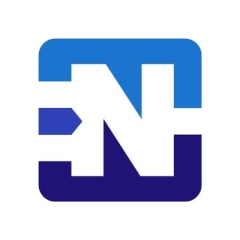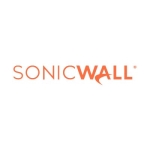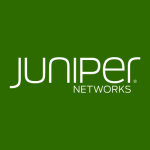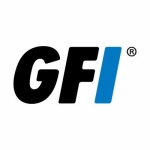How has it helped my organization?
The benefits I have seen in my organization from the use of Netgate pfSense rewards around the fact of how quickly we can implement changes that are needed with the tool are definitely one of the main things. Overall, we have experienced less downtime with the tool. In my organization, we have had downtime with Cisco. Overall, we have noticed some performance increases as well with the use of Netgate pfSense.
What is most valuable?
The solution's most valuable feature is that I really like the third-party add-ons, as they give the firewall a ton of flexibility and extra functionalities.
My organization plans to solve costs-related problems by using Netgate pfSense. We were using Cisco's firewall products, and the license and hardware costs were just too high. With Netgate pfSense, I think we can get a full firewall tool with support and no need for licensing for under 5,000 USD, saving a ton of money.
There were no specific security issues or challenges I was trying to address using Netgate pfSense.
In terms of the overall flexibility offered by the product, I would say that it is very easy to implement, make changes, and adapt to different challenges that we may have with it. It offers a lot of different options, including VPN options for site-to-site client VPNs. Overall, it is a great tool. It is a highly adaptable solution that is, most importantly, very easy to implement.
It is extremely easy to add features to Netgate pfSense and configure them. If you are talking about third-party stuff, it is something that is within the firewall itself. You can go into the Package Manager and install it.
From a configuration point of view, it is extremely easy to use the tool. With third-party stuff, it can be a pain, but overall, it is extremely easy to manage Netgate pfSense since it is mainly a GUI-driven tool. It is super easy to configure overall.
If I assess the solution for helping our organization prevent data loss, I think it has been great for us. Everything has room for improvement, but it has been great right now.
Netgate pfSense provides our organization with a single pane of glass management. The tool offers great flexibility and is awesome. In our organization, we haven't had any issues with it. It just makes changes that need to be done extremely quickly and efficiently by the end of the day.
I have worked with Netgate pfSense Plus. I buy the hardware from Netgate, and it comes with pfSense Plus.
Netgate pfSense Plus provides 100 percent features that help minimize downtime. In extreme situations, implementing connections that were super helpful in the past and just the ease of deployment, the product offers is helpful since even if something happens to the firewall itself, I can have a virtualized firewall doing the same thing within less than an hour. It can help with that downtime. I know that Netgate pfSense is extremely reliable and a great tool.
Netgate pfSense provides 100 percent visibility, enabling my organization to make data-driven decisions. Netgate pfSense is very much configurable. It gives you 100 percent of everything you need to make decisions. It gives you details of all kinds of different graphs, traffic, and firewall rules, along with the things that you definitely need in the form of the data that you need to be able to just make quick data-driven decisions.
Netgate pfSense visibility helps me optimize performance. The data is just so easily accessible that you can make decisions very quickly. It also helps improve performance. In our organization, we have noticed a very noticeable performance increase since we shifted from the old firewall from Cisco to Netgate pfSense.
If I were to assess the total cost of ownership of Netgate pfSense, I would say it is extremely low and affordable. I think it is a really very simple and extremely budget-friendly tool.
What needs improvement?
In our organization, we have had such a good experience with Netgate pfSense over the last four years. In terms of improvements, I have not really thought much, to be quite honest. Maybe faster releases for the software or the firewall itself can be areas where improvements are possible. The tool is just a little bit slow to release patches, so it is probably one of the things where the tool can improve. In general, the tool is not bad at all at the end of the day.
Speaking about whether any enhancements are required in the tool, I would say that the tool has everything that we need for our usage. We have an extremely complex environment, the most complex of which is how we use Netgate's BGP to connect to our ISP. Netgate pfSense is extremely feature-rich for our specific use scenarios, and we have not encountered any shortcomings in the solution.
For how long have I used the solution?
I have been using Netgate pfSense for around four years. The box itself says Netgate pfSense XG-1540. I don't remember the software version we are using right now, but all I know is that I keep it up to date. In my organization, it will be the latest version of the product.
What do I think about the stability of the solution?
I have not faced any issues with the stability of the product. I have one firewall in a very bad physical environment. It was very dusty, but it has been 100 percent reliable.
What do I think about the scalability of the solution?
It is an extremely scalable solution.
In our school, we have close to 1,800 students and 210 teaching staff overall. With administrative staff, I think there are about 50 people.
I have the tool in different locations and on different campuses.
How are customer service and support?
If I can call someone from the product's technical support team, l can have a technical person on the phone with me in less than five minutes. If you have any questions for them, they will come and try to give you the answer as quickly as they can, and if they don't have a reply, they will reply to you later via email. For the amount that it costs per year, the level of service that you get is unbeatable, honestly. I rate the technical support a ten out of ten.
How would you rate customer service and support?
How was the initial setup?
The product's initial setup phase was extremely straightforward.
When we deployed the product for the first time, we went through its documentation and how to do things. Otherwise, the strategy is usually based on the fact that we have four campuses, and they run in a similar manner. At least for us, we have a master configuration sort of thing, which we can kind of load into Netgate pfSense and make the small changes that we need, like VLAN changes and small things that apply to the location that the device will be deployed to, and it takes less than probably an hour or two to kind of have a firewall deployed working with the bare minimum, which is extremely fast compared to what it takes with Cisco.
In terms of maintenance, it has been pretty much like we do the setup and then forget it. The firmware updates, or physical maintenance, like cleaning the device, are there. From a greater overview, it is just kind of a set-it-up-and-forget kind of solution for us.
What about the implementation team?
The product's deployment was done in-house, and it involved just me. The enterprise-level support from Netgate helped my organization a lot, especially during the first two deployments, but after that, it was easy.
What was our ROI?
Personally, I do not have any metrics or data points associated with the ROI that I can share with anyone. My CFO is the person who has information related to ROI.
Which other solutions did I evaluate?
In our organization, the whole point of moving to Netgate pfSense was that we wanted something that wasn't hard to use or where the licensing wasn't so expensive. We looked at different open-source options, but I can't remember their names. We also looked at UniFi's firewall, but Netgate pfSense came on top for us, considering the support provided and the fact that Netgate's team is the main set of people that keep up with pfSense's open-source project. With Netgate, we work directly with people who use Netgate pfSense, and it is great. We did look at other options, one of which was UniFi, but I cannot remember the name of the other alternative to Netgate pfSense. I think it is called OPNsense.
Suppose I compare the other tools I evaluated with Netgate pfSense, and I feel that the pros of pfSense revolve around the area associated with the product's cost in terms of hardware requirements and licensing. There are no existing costs for the licensing or the hardware. You can deal with the licensing part yourself and get it at a cheap rate from elsewhere or buy it from Netgate's boxes directly from the solution company. Another pro would be the ease of management the tool offers since it is possible to have everything that you need in the GUI, which is a little bit controversial because a lot of people like CLI, but sometimes you need to get something quickly without having to have hundreds of different things.
I haven't come across any cons in the product since most of our company's scenarios are simple and small since we are just a school compared to what other big companies have. Everything that Cisco's firewall was doing for us, Netgate pfSense's firewall does for us for a fraction of the cost and even offers a better performance. I would not know the tool's cons since I do not have anything on my mind right now.
What other advice do I have?
I do not use Negate pfSense Plus on Amazon EC2 VMs. In our organization, we are using Negate pfSense Plus on Netgate's hardware. We use Netgate pfSense XG-1540.
To others who plan to use the solution, I would say that the support offered by the product is 100 percent worth it. The enterprise support is also extremely worth it. In a general sense, if people don't know much about implementation, they just need to read the documentation because many things, like the GUI part, could throw some people off. If you come from a CLI-based tool, the GUI aspect can throw you off, and I know it since it threw me off a little bit initially, but we were able to get through the implementation phase very thoroughly as the tool offers great documentation. By thoroughly going through the documentation, you will have a fairly easy time configuring the tool very methodologically. I really don't think I would recommend anything else apart from the fact that others need to read the documentation and take their time.
I rate the tool a nine out of ten.
Disclosure: PeerSpot contacted the reviewer to collect the review and to validate authenticity. The reviewer was referred by the vendor, but the review is not subject to editing or approval by the vendor.


















